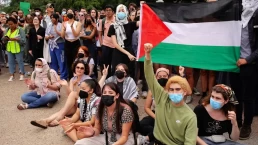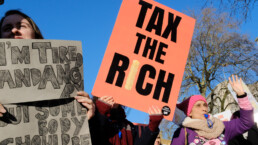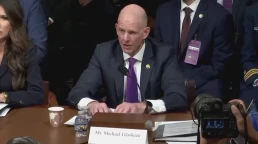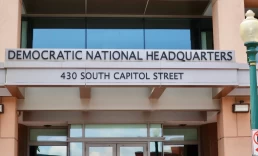From the early stages, the campus anti-war protests were confronted by a number of malign actors who sought to silence or discredit the dissent.
By Dr. James J. Zogby, Arab American Institute
In the 1960s, social critic Paul Goodman offered a parable to describe what had gone wrong with American higher education.
He wrote: “Millennia ago, there were wise people who knew many things that they were eager to share. Young people came to them and asked, ‘Would you teach us?’ And they did. Over time more students came to learn. And after learning, there were many more wise ones able and willing to teach. The enterprise grew with more students, more teachers, and more subjects to teach. It became so complicated that the wise ones hired clerks to keep track of who was teaching, what they were teaching, and which students were with which teachers. The problem today is that the clerks are running the show deciding who will teach, what they will teach, and who is qualified to learn.”

The lesson conveyed by this parable is relevant to understanding worrisome developments unfolding on US college campuses. Israel’s assault on Gaza, following Hamas’s attack of October 7, spawned a nationwide revolt of the young. While organised groups helped mobilise demonstrations demanding a ceasefire and Palestinian rights, the breadth and depth of the effort was more akin to a spontaneous eruption.
In this regard, it was not unlike earlier spontaneous protest movements that sprang up over the past decade: the Women’s March; the “Welcome immigrants” demonstrations that filled US airports in response to the “Muslim ban”; the student-led “March for our Lives” after repeated mass shootings; and the Black Lives Matter movement that erupted after the murder of George Floyd.
The ceasefire/pro-Palestinian movement had much in common with these earlier efforts. Its politics skewed left, was youth-led, and racially, ethnically and religiously diverse. The difference was that a main locus of its activities was college campuses.
Recent Posts
We’re Making ‘Tax the Rich’ More Than a Slogan
December 14, 2025
Take Action Now “Workers Over Billionaires” was the slogan on Labor Day. It should be the slogan every day.By Max Page, Labor Notes Taxing the…
‘Total Amateur Hour’: FBI Official Says Antifa Is #1 Threat in US—But Can’t Say Where, Who, or What It Is
December 13, 2025
Take Action Now “Just a complete admission here that the entire ‘antifa’ threat narrative is totally manufactured by this administration,” said one…
Utah Leaders Are Hindering Efforts To Develop Solar Despite A Goal To Double The State’s Energy Supply
December 12, 2025
Take Action Now Utah Governor Spencer Cox signed bills that will make it more difficult and expensive to develop and produce solar energy, ending tax…
Report of the Independent Democratic Task Force on U.S. Policy Toward Israel
December 12, 2025
Take Action Now For release in connection with the winter meeting of the Democratic National Committee convening on December 11, 2025 in Los Angeles……




